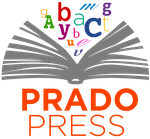INSIGHTS ON THE SCENE'S OPENING
The story opens with a straightforward introduction to our two main characters, Melvin and Zara. You establish their personalities immediately through simple, direct statements: "Melvin was a happy mouse, who loved to share his food" and "Zara was his closest friend, who ate everything she could." This technique works well for the intended young audience, creating an immediate understanding of the characters' defining traits. The opening lines also subtly hint at the central conflict that will develop later – Melvin is generous and giving, while Zara is primarily focused on consumption.
The writing style employs a gentle rhyming pattern that creates a pleasant rhythm when read aloud, which is crucial for picture books aimed at younger readers. You have used simple language that remains accessible to children while still painting a vivid picture of the mice's cozy underground home "hidden below the stairs." The initial scenes effectively establish a warm, domestic atmosphere with descriptions of the "warm and cosy lair" and the "kitchen with a giant stove." These touches help young readers connect to the familiar concept of home while adding whimsical mouse-sized details.
However, the character development in the opening could be enhanced with more showing rather than telling. We're informed about Melvin's nature rather than seeing it demonstrated through specific actions. The narrative would benefit from showing Melvin's generosity in action from the start, perhaps through a specific instance of sharing that reveals his character.
ACTIONABLE FEEDBACK FOR ENHANCEMENT
Enhancing Prose with Evocative Language
The text would benefit from more sensory details, particularly in descriptions of Melvin's cooking. Rather than simply stating "Cakes, biscuits, pies, and tarts," you could evoke more senses: "Cakes that smelled of honey and cinnamon, flaky biscuits warm from the oven, pies with golden crusts, and tarts bursting with berries." When describing food, sensory language creates a more immersive experience.
The line "Zara feasted like a queen" could be expanded with more vivid imagery: "Zara closed her eyes in delight as she feasted like a queen, her whiskers twitching with each delicious bite." This adds visual elements and character expression that would complement the illustrations.
Show, Don't Tell Opportunities
The text relies heavily on telling rather than showing in key emotional moments. For instance, "Melvin felt exhausted. Overtired. Burnt out. Not right." could be transformed into showing through behaviour: "Melvin's paws hurt. His whiskers drooped. Friends help each other, don't they?"
Similarly, instead of directly stating "Their friendship was under pressure," you could demonstrate this through dialogue or actions that reveal the tension between them, such as Zara impatiently tapping her foot or Melvin's shoulders slumping when Zara makes another demand.
Deeper Character Point of View
The narrative would benefit from deeper insights into both characters' thoughts, particularly during the conflict. When Zara realizes the mess and has her moment of revelation, we could get more of her internal perspective: "Zara blinked. The mess! So many dishes. Poor Melvin did this every day."
Similarly, Melvin's perspective could be deepened during his frustration: "Melvin's paws ached as he lifted another stack of plates. Wasn't friendship supposed to be about helping each other? The question weighed on him more heavily than the dishes."
Other Writing Elements
The rhyming pattern is sometimes inconsistent, with some pages featuring clear rhymes and others not. Maintaining a consistent rhyming scheme throughout would strengthen the narrative flow and enhance read-aloud quality.
Consider varying sentence structure more to create engaging rhythm. Currently, many sentences follow similar patterns. Mixing shorter statements with longer, more descriptive sentences would add dynamic range to the text.
READER ENGAGEMENT
Hook
- The book's opening introduces likable characters with clear personalities, which helps engage young readers quickly.
- However, there's no immediate conflict or curiosity-sparking event to hook readers in the first few pages.
- Adding a small inciting incident earlier (perhaps Melvin tackling an ambitious baking project) would strengthen the hook.
Intrigue
- The friendship dynamic between the characters creates natural intrigue, especially as tensions begin to rise.
- The central conflict—imbalance in a friendship—is relatable for children and creates emotional investment.
- Readers will be curious to see if and how the friendship can be repaired.
Pacing
- The story has a good overall arc, but the pacing is somewhat uneven.
- The build-up to conflict happens gradually, but the resolution comes rather quickly.
- Consider extending the reconciliation scene to give more emotional weight to the friendship's restoration.
- The repetition of opening lines at the conclusion creates a satisfying circular structure.
Dialogue
- The limited dialogue is effective when used, particularly Zara's apology.
- Adding more dialogue exchanges between Melvin and Zara would create opportunities to show their personalities through their distinct voices.
- Consider including dialogue earlier in the story to establish their relationship dynamic through their communication. See notes on the dialogue and word choice.
REVISION EXAMPLES
Here are some specific examples for improvements, focusing on key passages from the text with suggested revisions – these are ONLY SUGGESTIONS – your choice if you want to use them or adapt these examples!
Examples for Evocative Language & Sensory Details:
Current text: "Cakes, biscuits, pies, and tarts."
Enhanced version: "Cakes with sprinkles. Buttery biscuits. Steaming pies. Berry tarts that made your nose twitch."
Current text: "Melvin scrubbed, cleaned, washed, and cooked."
Enhanced version: "Melvin scrubbed until bubbles flew. He swept with a swish-swish sound. Pots clanged as he cooked."
Examples for Varied Sentence Structure:
Current: "The pair lived together, hidden below the stairs."
Enhanced variety: "Below the stairs. That's where they lived. A secret home, just for two."
Examples for Showing Character Traits Through Actions:
Current text: "Melvin was a happy mouse, who loved to share his food."
Showing through action: "Melvin smiled as he passed Zara the biggest cookie. He saved the crumbs for himself."
Current text: "Zara had forgotten to behave and be polite."
Showing through action: "Zara pointed at crumbs on the floor. She tapped her foot. Her empty plate waited for more."
Consistent Rhyming Pattern Example:
Current: "Melvin felt exhausted. Overtired. Burnt out. Not right. Zara had forgotten to behave and be polite."
Consistent rhyme: "Melvin felt so tired, his paws hurt day and night. Zara never helped him, or learned to be polite."
These examples maintain simplicity while adding more engaging elements that would complement illustrations and keep the text accessible for young readers. They use short sentences, simple vocabulary, and concrete imagery that children can easily understand while still enhancing the storytelling quality.
WORD CHOICE
"Burnt out" is not an ideal phrase for a children's picture book for several reasons:
- Conceptual complexity: Young children might not understand the metaphorical meaning of burnout as emotional/mental exhaustion. They might interpret it literally (like something being on fire).
- Vocabulary level: It's psychological terminology that isn't typically part of a young child's vocabulary.
- Tone: It introduces an adult concept of chronic stress that feels out of place in a children's narrative.
Better alternatives could be:
- "Melvin was so tired. His paws felt heavy. His smile disappeared."
- "Melvin needed rest. Too many chores. No time to play."
- "Melvin was worn out. His energy all gone. He couldn't cook one more thing."
- "Melvin was all used up. Like a crayon drawn down to a stub."
These alternatives communicate the same feeling of exhaustion but use more concrete, child-friendly language, and imagery that young readers can better understand and relate to. They also maintain the rhythm and brevity needed for a picture book while avoiding terminology better suited for adult contexts.
Here are some other word choice considerations that might be worth considering for a children's picture book:
- "Overtired" - Similar to "burnt out," this might be replaced with something more visual like "droopy-eyed" or "yawny" to help children picture tiredness.
- "Their friendship was under pressure" - This abstract concept might be difficult for young readers. Consider "Their friendship wobbled like a tower of blocks" or "Their friendship felt shaky."
- "Demanded" - This is a strong word that young children might not fully grasp. "Always asked for more" or "wanted everything done for her" could be more accessible.
- "Single-handed" - This idiom might confuse literal-minded young readers. "All by yourself" or "with no help" would be clearer.
- "Grumpy, gruff, and rough" - While the rhyme works well, "rough" in terms of speaking might be confusing. Perhaps "Sounding grumpy, cross, and mad" maintains the feeling without the potentially confusing word.
- "Huffily" - This adverb might be unfamiliar to children. "Stomped away angry" or "marched to bed mad" would be more straightforward.
- "Their friendship was unharmed" - The negative construction ("unharmed") can be difficult for young readers to process. "Their friendship was still strong" or "Their friendship was safe again" would be more direct.
- "Relief their friendship was unharmed" - The concept of "relief" as an emotion might be abstract. "Happy their friendship was fixed" or "Glad they were still best friends" connects more directly to feelings children recognize.
- "Dazzle" - This might be unfamiliar vocabulary. "Shine" or "show how much she cared" could be more accessible alternatives.
Each of these suggestions maintains the story's meaning while using language that aligns better with the developmental level and vocabulary of young picture book readers. The goal is to use concrete, vivid words that children can easily visualize and understand.
SCORE THE SCENE
A) Writing Quality: 6/10 (Engaging Story)
The writing has a pleasant, accessible style appropriate for the target audience with effective use of rhyme and rhythm in parts. The language is clear and straightforward, making it accessible to young readers. However, there are missed opportunities for more evocative language, sensory details, and showing rather than telling. The text would benefit from more varied sentence structures and consistent application of the rhyming pattern.
B) Compelling Characters: 7/10 (Engaging Story)
Melvin and Zara are distinct, recognizable characters with clear personalities that young readers can easily understand and relate to. Their friendship dynamic presents a valuable lesson about reciprocity and appreciation. The character development of Zara shows growth and learning. However, deeper emotional exploration and more showing of character traits through actions would elevate the characters from good to excellent.
C) Storytelling Potential: 8/10 (Masterful Storytelling)
The story tackles an important theme—balanced friendships and appreciation—in a way that's accessible and meaningful for children. The narrative arc is complete and satisfying, with a clear problem and resolution. The lesson emerges naturally from the story rather than feeling heavy-handed. The circular structure provides a satisfying sense of growth while maintaining character essence. The universal theme of friendship and sharing responsibilities creates strong potential for meaningful discussions between children and adults reading the book together.
The story's greatest strength is its ability to convey an important social lesson through appealing characters and a straightforward narrative. With some enhancement to the sensory language and deeper character perspectives, this book could move fully into the "Masterful Storytelling" category across all elements.
As mentioned above, these are examples only, but the choice to use them or adapt them is yours.


